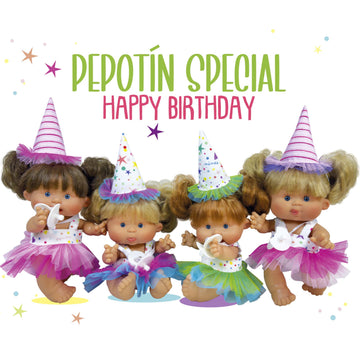The Facts About Dolls And Accessories Revealed
Not known Factual Statements About Dolls And Accessories
Table of ContentsUnknown Facts About Dolls And AccessoriesDolls And Accessories - The FactsDolls And Accessories Can Be Fun For AnyoneThe Best Guide To Dolls And AccessoriesDolls And Accessories - An OverviewGetting The Dolls And Accessories To WorkThe 4-Minute Rule for Dolls And Accessories
When dolls are included in group play, youngsters practice waiting, sharing, and listening to others' concepts. Whether they're acting to be a moms and dad, brother or sister, or good friend, children learn just how relationships workhow to sustain others, solve disagreements, and take care of another person. These very early role-play experiences become the groundwork for healthy relationships and relationships later on in life.Duplicating reassuring regimens with a doll (feeding, rocking, putting to bed) can help kids really feel tranquil and safe. These comforting routines educate them how to self-regulate. Caring for a doll can make a kid feel qualified and confident - doll accessories. It provides a feeling of duty and control in a globe that usually feels unforeseeable.
What Does Dolls And Accessories Mean?
When kids see dolls that reflect their race, heritage, and culture, it enhances a favorable feeling of identification. It says, "You belong. Your tale issues." Dolls likewise present kids to cultures outside their own, building considerate interest and empathy for others. This is where inclusive play can bring about inclusive neighborhoods.
As Dr. Karyn Purvis, a leader in child development and trauma-informed care, when stated: This effective quote highlights exactly how play isn't simply funit's how children discover finest. The brain cables itself with rep. When a child is engaged, joyous, and emotionally linked to an activitylike doll playthe mind strengthens those connections faster and more meaningfully.
The Single Strategy To Use For Dolls And Accessories

Kids need empathy, generosity, and imagination tooand doll play provides that. Yesdolls provide something distinct. They encourage open-ended narration and psychological link in such a way couple of other playthings do. Dolls are commonly a youngster's initial "pal," assisting them practice relationships, develop interaction skills, and feel comforted. Youngsters create their sense of self from a young age.
Fascination About Dolls And Accessories
With dolls that matter. Samantha Ong Samantha Ong is the founder of Joeydolls, a Canadian-based toy brand on a mission to commemorate Eastern societies via joyful, comprehensive play. Influenced by her own experiences expanding up without social depiction, Samantha develops dolls that aid kids feel happy of that they are while triggering inquisitiveness and empathy in others.
Playing with dolls encourages youngsters to chat more about others' thoughts and feelings, a research study has actually discovered. The study recommends that playing imaginary games with dolls could help youngsters establish social abilities, concept of mind and empathy.
The Single Strategy To Use For Dolls And Accessories
They were additionally more probable to deal with the dolls in the 2nd person, talking with them directly, whereas the characters on the computer system display they tended to describe in the third person. No distinction was observed between kids and girls."Inner state language can suggest that a youngster is thinking of other individuals's thoughts and emotions while having fun with dolls," said Gerson.
And that they see language usage hereof is good verification of the theory."Mardell added that the findings should certainly put on any sort of role-play toy, rather than being details to Barbies. "I 'd take a broader sight of what a doll is," he claimed." [Maybe] any item that the youngster can invest a sense of various other into a packed animal, an oven mitt that speaks to them, and even a fictional buddy."Kid generally start to reveal indicators of interior state language around the age of four.
All about Dolls And Accessories
"It ends up being important for making and maintaining relationships, and exactly how they gain from their instructors, and parents."The research likewise located that the children had raised mind task in the posterior superior temporal sulcus (pSTS) area when they talked as though their dolls had thoughts and sensations. The pSTS area is believed to be included in the development of social and emotional handling skills.
Childhood is not a static life phase; certainly, the interpretation, meaning and understanding of childhood years are all based on modification. By the 19th century among the most extensive adjustments was the importance positioned on enabling youngsters to experience "the care free pleasures" of childhood with play activities. Play was now considered to be a critical component of an excellent youth.
In order to totally comprehend the definition of play, one should likewise comprehend the significance of the doll. Dolls are much even more than toys developed to amuse young ladies.
A Biased View of Dolls And Accessories

It is just with historical investigations that researchers can intend to uncover and document the full array of play experiences. Chronicling these experiences, and particularly the duty of dolls, is essential for presenting a much more complete photo of childhood throughout the 19th century. Alarcn, Sara E - doll accessories., "Child's Play: The Role of Dolls in 19th Century internet Childhood" (2007 )